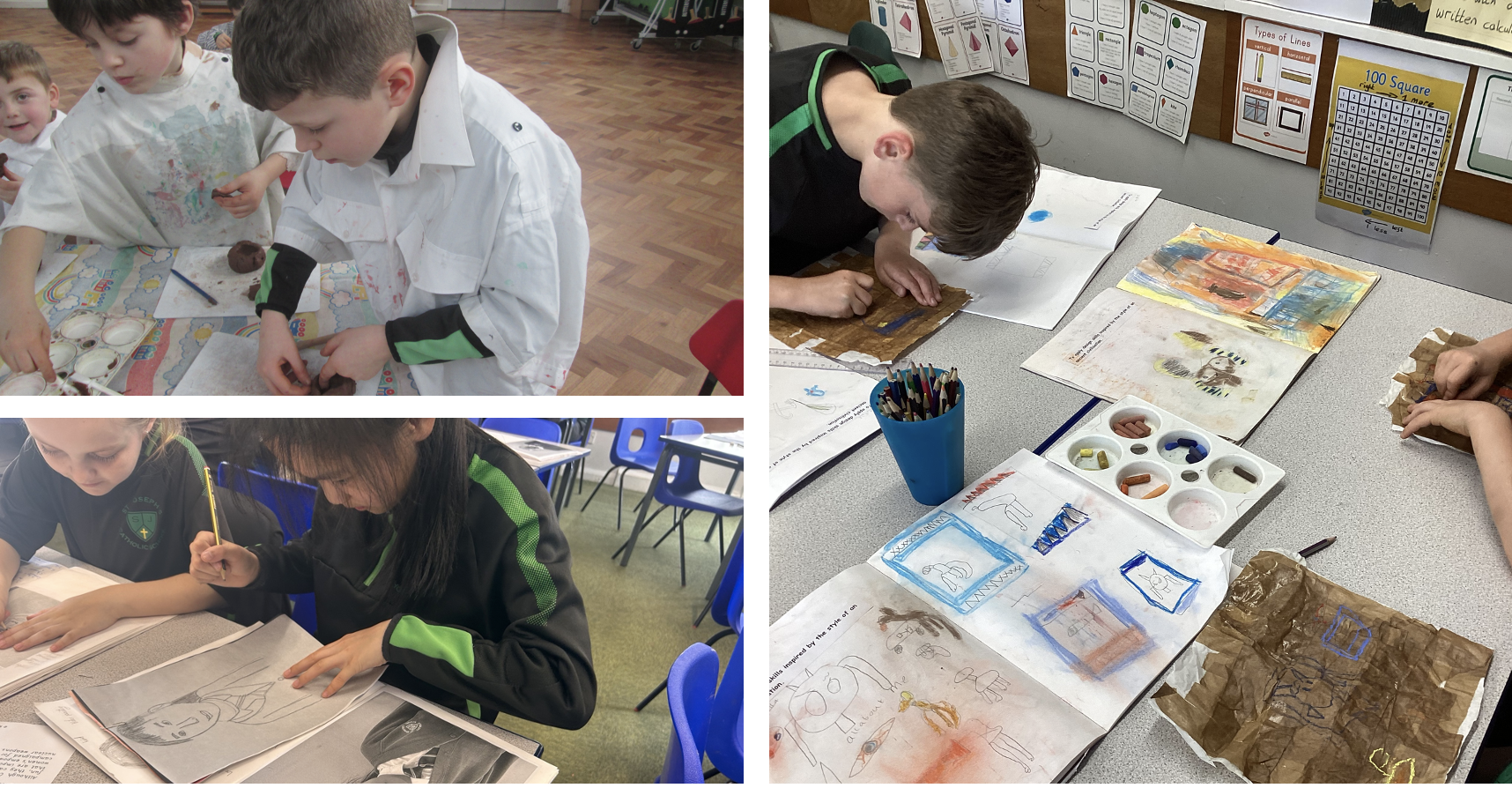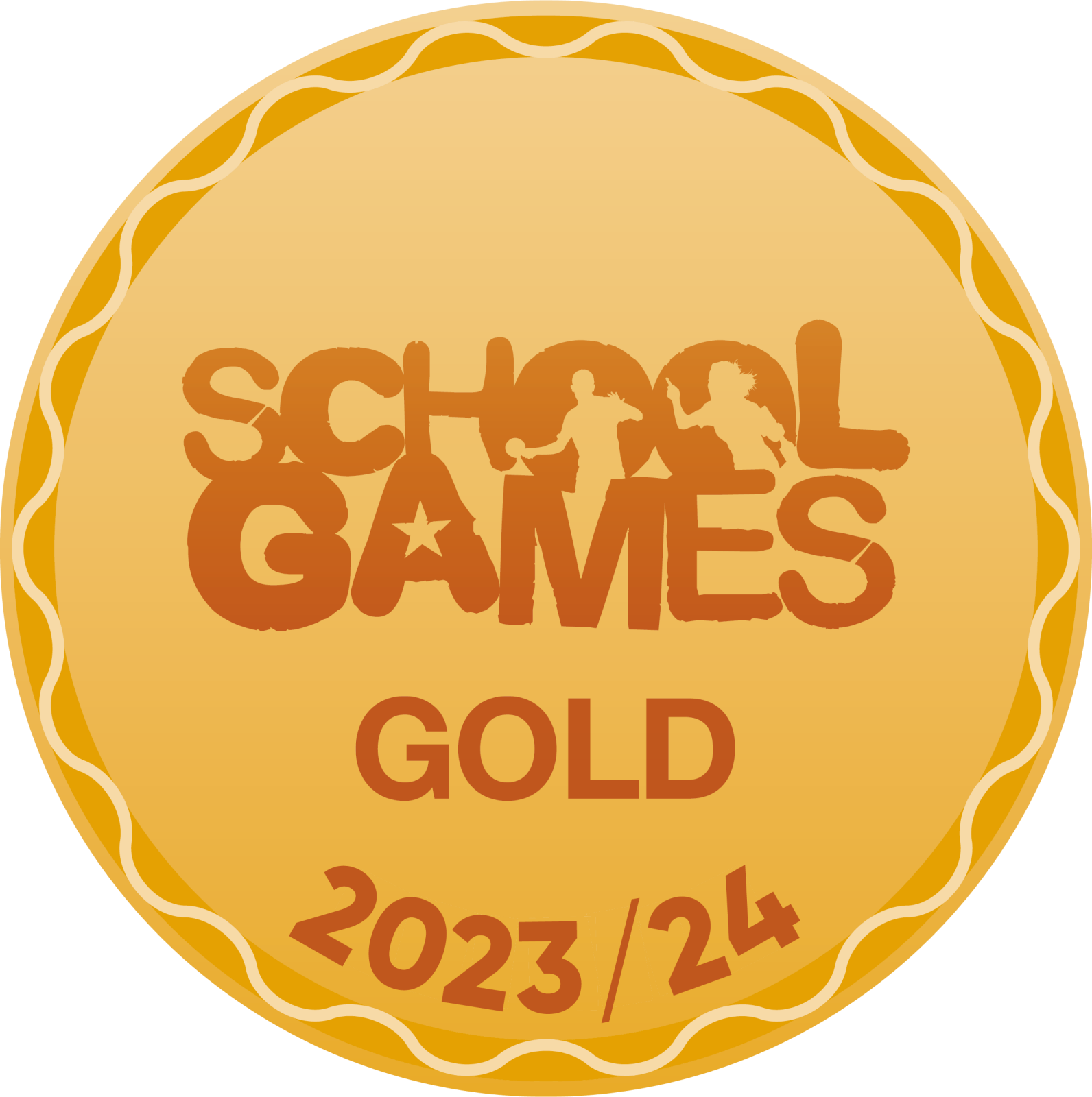Art & Design
The Intent, Implementation and Impact of our Curriculum
Our Art Subject Lead is Mrs Hargreaves

Introduction to Art at St. Joseph's
“Art is a foundation subject of the National Curriculum and an important part of developing our children’s ability to develop their individual creativity, express their ideas and understanding and to work both individually and collaboratively with others. Each year group plans art lessons, which aim to ensure that children are able to develop key skills using specific media. Our aim is to ensure that children are confident approaching artwork, feel a strong sense of achievement, value the impact of art within our own lives and are able to reach their full potential.”
Quote from the National Curriculum 2014
Subject leader-C Hargreaves
Intent
At St. Joseph’s we aim to inspire our pupils and develop their confidence to experiment and invent their own works of art. Our curriculum is designed to give pupils every opportunity to develop their ability, talents and interests. We aim to support pupils to express their ideas about the world, as well as learning about art and artists across cultures and through history.
As a school, we have chosen to use a published scheme, Kapow Art and Design Scheme of Work, to teach the Art and Design Curriculum. In Key Stage 1 and 2. Kapow Art and Design Scheme of work enables our teachers to deliver creative, inspiring and engaging lessons and provides for progression in skills and knowledge. The scheme of work fully meets the requirements for the National Curriculum end of key stage attainment targets and covers the National Society for Education in Art and Design’s progression competencies.
Implementation
Early Years Foundation Stage
At St Joseph’s, staff select resources to support the teaching of the Early Years curriculum and the achievement of the Early Learning Goals for Expressive Arts and Design ‘Exploring and Using Media and Materials’ and ‘Being Imaginative’. EYFS pupils are taught in variety of ways through adult-led and supported tasks and child-initiated learning in provision areas.
Practitioners will consider the Characteristics of Effective Learning when they are planning, leading or supporting learning.
Key Stage 1 and Key Stage 2
Art and Design in Key Stage 1 and 2 is taught in a block of lessons over the period of approximately one week each half term.
The Kapow Art and Design Scheme of work enables our teachers to deliver creative, inspiring and engaging lessons and provides for progression in skills and knowledge. The scheme of work meets the requirements for the National Curriculum for Art and Design the aims for pupils to:
- produce creative work, exploring their ideas and recording their experiences
- become proficient in drawing, painting, sculpture and other art, craft and design techniques
- evaluate and analyse creative works using the language of art, craft and design
- know about great artists, craft makers and designers, and understand the historical and cultural development of their art forms
From these aims, five strands have been identified that run throughout:
- generating ideas
- using sketch books
- making skills (including formal elements)
- evaluating and analysing
- knowledge of artists
The lessons are sequential, allowing pupils to build on their skills and knowledge, applying them to a range of outcomes. The formal elements are also woven through the units of lessons. Key skills are revisited in a spiral curriculum model, thus allowing pupils to revise and build on previous learning. Units are organised into four core areas:
- Drawing
- Painting and mixed- media
- Sculpture and 3-D
- Craft and Design
Progression
Within the Art and Design progressive skills document, the progressive objective identify what pupils should know by the end of each year group and link to prior learning.
These enable teachers to identify and plug gaps in pupil’s knowledge and skills.
Assessment
EYFS
Regular observations and assessments of learning take place throughout the year and contribute to a summative assessment at the end of EYFS using the Early Years Outcomes for Expressive Arts and Design: ‘Exploring and Using Media and Materials’ and ‘Being Imaginative’.
KS1 and KS2
Observational assessments take place during the art lessons and at the end of the unit using an informal quiz. The assessments contribute to a summative judgement at the end of the year.
Impact
By the end of primary school, it is the expectation that pupils will:
- Produce creative work, exploring and recording their ideas and experiences
- Be proficient in drawing, painting, sculpture and other art and design techniques.
- Evaluate and analyse creative works using subject specific language
- Know about great artists and the historical and cultural development of their art
- Meet the end stage expectation as set out in the National Curriculum for Art and Design
The impact of the curriculum will be reviewed at the end of the year through observations of pupils’ work, through discussions about their work and a celebration of their creation
expressive-arts-and-design-EYFS.pdf
Lite-Progression-of-skills-and-knowledge-for-revised-Art-Design-scheme.pdf
Art Long term plan 2022-23 & 2023-24.pdf
Art and Design Progression 2023.pdf












